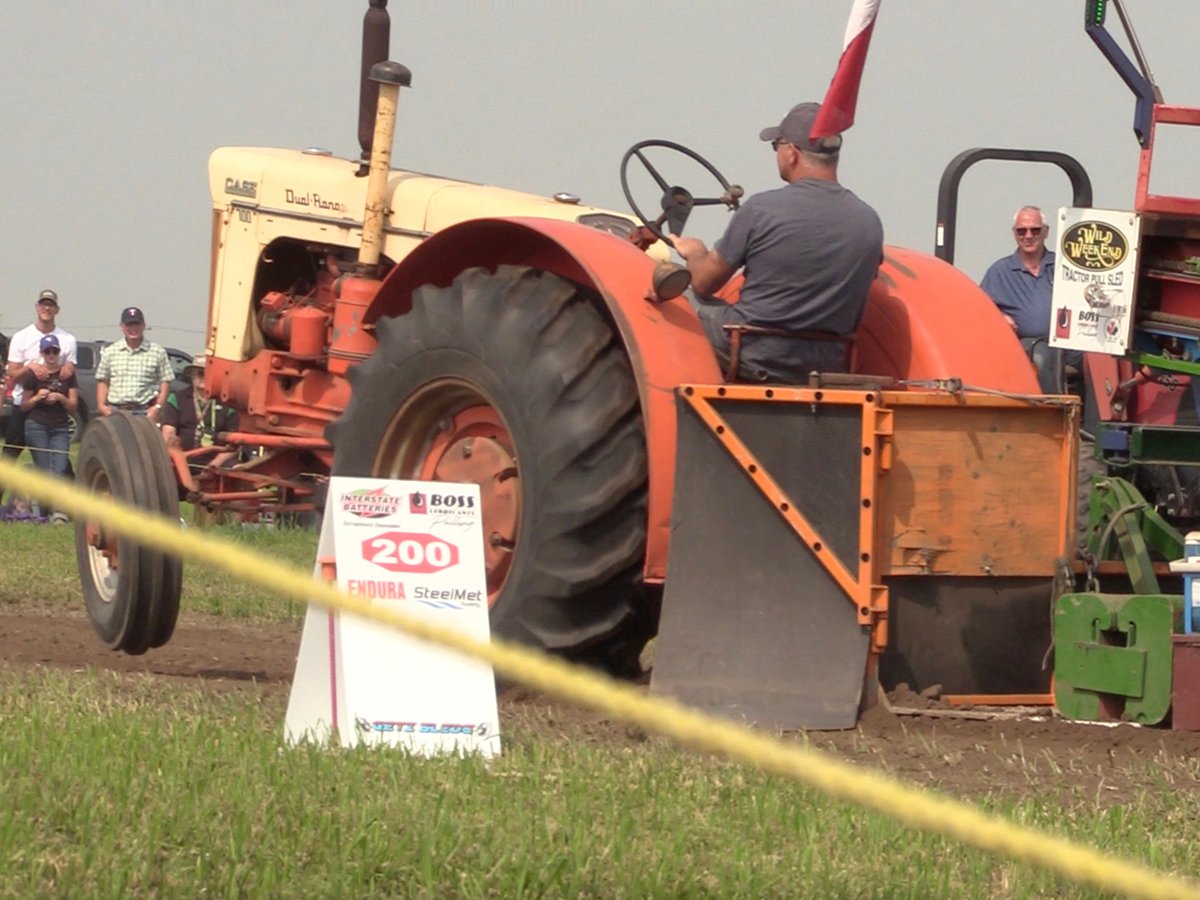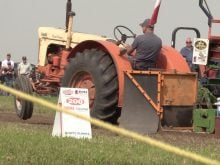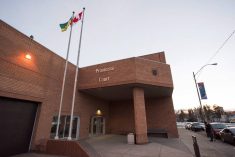The federal government is still sorting out how much money it will give
the Canadian Agricultural Safety Association to continue its work.
CASA has had $1 million a year since 1994 to develop campaigns that
urge farmers and their families to be safe.
Former CASA chair Cathy Vanstone is heading the group’s “visioning”
committee this winter. It is working with Agriculture Canada to
determine how to get the message across in the future.
“We’re building a new program,” Vanstone said.
Read Also

Vintage power on display at Saskatchewan tractor pull
At the Ag in Motion farm show held earlier this year near Langham, Sask., a vintage tractor pull event drew pretty significant crowds of show goers, who were mostly farmers.
“The timeline is not specific. We’re hoping to have an idea of how we
fit with them (Agriculture Canada).”
The new program will include discussions about the level of funding.
For now, the national group is asking for transition money to continue
networking, publishing a newsletter and fund projects.
Vanstone said she and the committee hope to know by spring what amount
CASA will receive.
Two of the groups that CASA has funded hope to continue receiving
money. One, which Vanstone called key, is the Canadian Agricultural
Injury Surveillance Program, run out of Kingston, Ont., by Dr. Rob
Brison. He gathers data from hundreds of coroners and hospitals across
Canada and puts it into an annual report of farm deaths and injuries.
The surveillance program has been getting $160,000 a year.
Another is the Canadian Farmers With Disabilities Registry. Its
president, Carl Palmer, said 200 farmers are members, but the group
would like to get more leaders outside of Manitoba and Saskatchewan and
to sign up members in British Columbia and the territories. He said
there is also a gap with few young farmers in the group.
Palmer said the registry wants federal funding so it can hire a
part-time manager and hold a national conference.
Funding for safety is also an issue south of the border. At CASA’s
recent annual meeting in Winnipeg, a representative from its American
counterpart said it has set up an endowment fund. The United States
National Institute for Farm Safety has $55,000 in its fund.
But the American group is much narrower in focus, dealing mainly with
researchers and farm safety professionals. CASA includes producers,
schools, farm organizations and government agencies, as well as
academics and safety experts.
Vanstone said CASA still must work with farm equipment manufacturers to
build in safety and consistency. She noted that one machine produced
last year is 5.4 metres high but Manitoba Hydro’s power lines are 5.1
m.
CASA’s new chair is Judy Guernsey, an epidemiologist at Halifax’s
Dalhousie University. She said the funding issue doesn’t scare her
because the safety association “has lots of momentum. People want to
work with us.” She said the group’s biggest advantage is its national,
broad-based scope.
When asked the best way to get the safety message to farmers, Gurnsey
said producers should be listened to.
“Have them tell us what they need.”
















